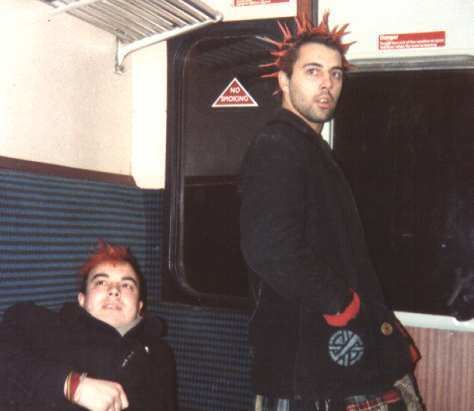 | ||
Liberty spikes is styling hair in long, thick, upright spikes. The style, now associated with the punk subculture, is so named because of the resemblance to the spikes on the head of the Statue of Liberty.
Contents
History
Liberty spikes trace their origins to the Ancient Britons. Warriors washed their long hair in lime water, which also bleached it blond. This hairstyle was highly symbolic as a badge of honor and manhood: Celts were not allowed to spike or cut their hair until they had killed an enemy. After the subjugation of Britain spiked hair fell out of use in favor of short Roman haircuts. In the silent film era some actors, like comedian Harold Lloyd, experimented with spiked hair to stand out from the crowd, although this trend did not catch on with ordinary people. This changed in the 1970s when the emerging British punk subculture chose messy, choppy hair in reaction to the long smooth styles worn by hippies and disco fans. Originally the spikes were small, as worn by modern-day pop-punk fans, but by the 1980s this had evolved to tall liberty spikes, sometimes over a foot in length. Liberty spikes were also worn by the Goth subculture, although in this case they were dyed black instead of the bright unnatural colors favored by punk rockers.
There are also liberty spikes that are in form of front spikes that looks more like the crown of the Statue of Liberty and than a mohawk. This type of styling is not easy by any means. Those who do it, spend anywhere from one to two hours, and they must be done everyday because it can be very disturbing to sleep with. This form of liberty spikes is also known as Crown.
Maintenance
In this style, the hair is formed into thick spikes that may radiate outwards in all directions or all point up in the same direction. They are favored for their durability in extremely long hair. Liberty spikes may be enhanced by the use of hair dyes.
Liberty spikes are also a common way of styling mohawks.
Forming and keeping the shape of liberty spikes is beyond the capacity of some hair styling products, which were created for more natural looking styles.
